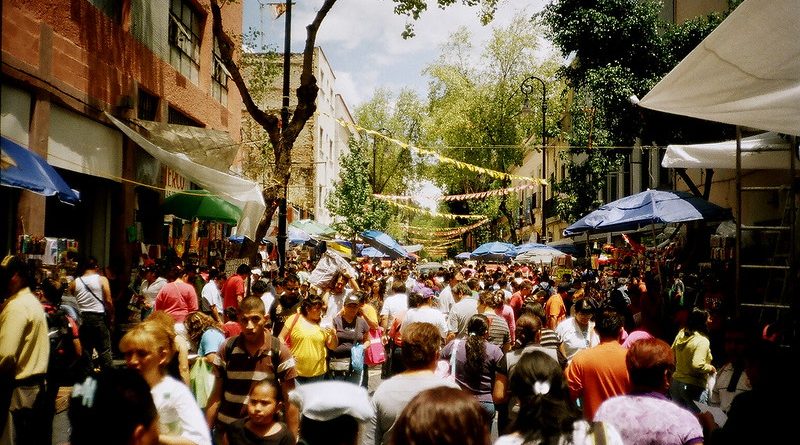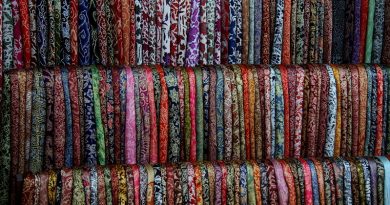Bazaar: Mexico City Shopping Guide
Shopping Information
Known as Distrito Mexico, or D.F. for short, Mexico City is the first port of call for many visitors arriving in the country. Disorientated and overwhelmed by the noise, bustle and congestion, all too often the lively capital is forsaken in a hurry for the idyllic beaches and colonial towns. If you’re after authentic souvenirs, superb crafts and high quality jewellery at unbelievable prices you’d be best advised to linger awhile. There’s barely a thing made even in the remotest region of Mexico which can’t be bought in a market or mall in the country’s commercial hub.
The Markets of Mexico
Every town in Mexico has at least one market, whether it’s a permanent covered fixture or a weekly affair taking over the zocolo or main square. Mexico City, however, has at least one in every district.
Make sure you check out:
Mercado Cuidadela
A great place to purchase Mexican handicrafts, where you can watch artisans who hail from all over the country weave their magic from guitar-makers from Paracho in the state of Michuacan to nimble-fingered Indian women covering wax masks with an array of tiny beads. Tin toys and boxes, woodcarvings, rugs, serapes, papier-mâché ornaments and ceramics… the variety of merchandise seems as endless as the aisles of colourful stalls as far as the eye can see.
El Bazaar Sabador
This Saturday market takes place between 10am and 7pm in. Originally conceived as a three month pre-Christmas bazaar in 1960 by four talented local artists, El Bazar Sabador was so successful that each Saturday, the courtyard of the atmospheric 17th century house on Plaza San Jacinto, San Angel, has been transformed into a thriving marketplace of quality craft items. This is a classy, high-quality market and the ‘stalls’ are set up more like fancy boutiques selling crafts, jewellery, clothes, wooden masks, beads, bark paintings, embroidery, candles, wall hangings and sculptures. In order to become a member an artist or craftsman’s work must display an adherence to the colour and tradition of Mexican culture.
San Angel itself is an upmarket enclave of cobbled streets and colonial style churches. The square outside is filled with artists hoping to offload their latest canvases and paintings of the city to the steady stream of tourists who’ve come specially for the famous Saturday market.
Coyoacan Weekend Craft Fair
80 years ago Coyoacan (‘Place of the Coyotes’) was a picturesque little town where newly weds from Mexico City used to spend their honeymoons. Though since embraced by the boundaries of the capital, it remains one of the artiest districts and holds three popular markets throughout the week: the daily market on Allende, the weekend Bazar Artesanal de Coyoacan on the west side of Plaza Hidalgo and an informal arts and hippy wear market in the Jardin del Centenario, also at weekends.
Mercado Insurgentes
The Mecado Insurgentes, aka Mercado Zona Rosa or Mercado Londres (since it is located on Avenida Londres in the Zona Rosa district) sells an enormous variety of Taxco silver, along with other traditional Mexican crafts. The alleyways between the stalls of this covered market are narrow, and you’re beset on all sides by rows of glinting trinkets and vendors calling after you to inspect their wares.
Though many of the pieces are hand crafted with delicate designs, here the price is usually determined by the weight of the item (unlike in shops, where greater emphasis is placed on the workmanship). Finest quality silver is stamped with the mark .925, which means they contain 92.5% of the precious metal. Buyers should beware not to mistake poor quality plate or alpaca (a locally available alloy of copper, nickel and zinc that looks like silver but costs just half the price) for the genuine article.
Shops
Emilia Castillo Silversmith
Mexican silver is some of the best in the world, and visitors to the country can pick up ornate trinkets of finest quality metal for a fraction of what they would cost elsewhere. The town of Taxco, about two hours drive from Mexico City, is the center of the silver industry but as is the case with most native crafts you can find some beautiful works even if you don’t plan on venturing outside of the Capital.
The Mexico City shop of Emilia Castillo, one of Mexico’s most respected silversmiths, is adjoined to the Hotel Camino Real in the plush Polanco area of the city. The Taxco-based designer is the daughter of Alberto Castillo who trained with William Spratling, the American entrepreneur who revived Taxco’s ailing silver trade in the early 20th century. Growing up around her father’s workshop, Emilia took to tinkering with silver like many girls play with dolls.
Emilia draws inspiration for her pieces from everything around her, especially the animal and insect kingdoms, and finds silver the most versatile medium of artistic expression. More than just jewellery, she tried to imbue the items she designs with functionality: she has a range of kitchenware, utensils, racks and ceramics onto which have been fused delicate designs in molten silver.
Emilia has been a household name in the United States for over 10 years, ever since her line was picked up by department store Neiman Marcus. When she was just 5 years old, her now-grown-up daughter Alejandra began draw pictures for Emilia to turn into pieces of silver art, and before long she too had an immensely popular line.
Emilia Castillo
Leibinitz No. 100 Local 1,2 y 3
Col. Nueva Anzures
11590 Mexico, DF
Tel: 55 31 88 73
Monte de Piedad (National Pawnshop)
Probably the oldest pawn shop in the Americas, Monte de Piedad was founded in 1775 and has 50 branches throughout Mexico. The national headquarters in Mexico City is located in a historic building near the Zocolo, in the heart of the Centro Historico.
People from all sectors of society come to this respectable, government-run institution to offer some household item, trinket or heirloom as collateral against a loan of ready cash. Monte de Piedad takes anything – including washing machines, cars and even houses – as long as it has a street value of more than US$3. A loan will then be issued for 50% of the item’s street value.
95% of pawned possessions are redeemed, but whatever remains in the vast storerooms is put up for sale. The showrooms at the flagship branch hold antiques, jewellery and crafts, while cars, electrical goods and miscellaneous goods are sold elsewhere.
Monte de Piedad is a far cry from the usual pawn-shop perception of a dingy hovel run by old men who run their hands together in glee at the thought of getting their paws on some widow’s valuable: as well as providing credit to the poor through the public sector, donates all proceeds are donated to NGOs working with the poor, the elderly and orphans.
Nacional Monte de Piedad
Monte de Piedad No 7
Centro Historico
C.P. 06000
Mexico, D.F.
Accommodation & Travel
Hotel Premier
The Zona Rosa is a triangle of streets named after European cities, situated west of the Zocolo and south of the Paseo de la Reforma. During daylight hours it remains the favourite shopping destination that it has been for decades, and many visitors to the city base themselves here, near the hub of capital’s nightlife.
Our crew stayed at Hotel Premier, just a few blocks from the Zona Rosa.
Hotel Premier
Atenas No. 72
Mexico 6 D.F.
Tel: 011 52 55 66 27 00
Fax: 011 52 57 03 33 04
Holiday Autos
Mexico City is one of the largest cities in the world, and you’d have a hard time exploring every nook and cranny without use of a car. Our crew rented a vehicle from Holiday Autos.
Holiday Autos website
Tel: 0870 400 4447
Even so, driving in Mexico is not for the fainthearted, and there is a good bus and underground metro network which will take you to the most popular tourist destinations.




